Key takeaways
- The Allegory of the Cave emphasizes the importance of questioning our perceptions and the discomfort connected with seeking deeper knowledge.
- True learning is portrayed as an ongoing journey of moving from darkness (ignorance) to light (understanding), encouraging curiosity and critical thinking.
- Education should foster an environment where doubts and challenges are welcomed, allowing students to explore their beliefs and assumptions freely.
- Plato’s teachings transform education into a path of enlightenment, motivating learners to become active explorers rather than passive recipients of information.
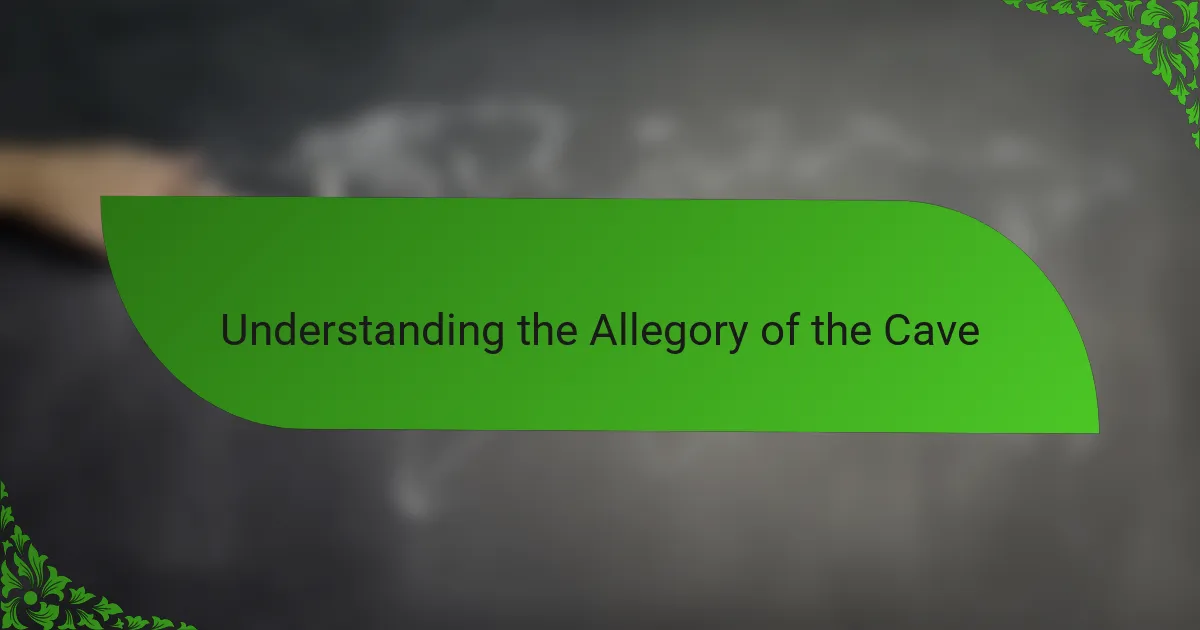
Understanding the Allegory of the Cave
Plato’s Allegory of the Cave paints a vivid picture of prisoners chained inside a dark cave, forced to watch shadows flickering on a wall. I remember the first time I really grasped this image—it felt like looking into a mirror reflecting how we often accept limited realities without questioning them. Have you ever wondered how much of what you believe is simply a shadow of something bigger beyond your immediate perception?
What struck me most was the painful journey of the prisoner who breaks free and steps into the sunlight. I sensed the mix of fear and awe that must come with leaving behind familiar illusions and confronting a dazzling, confusing truth. This metaphor resonates deeply—how uncomfortable and disorienting it can be to seek knowledge that challenges everything we once took for granted.
Isn’t it fascinating how the allegory forces us to reflect on education itself? Rather than just memorizing facts, it encourages deep questioning and the courage to explore beyond comfortable shadows. From my experience, this is the heart of true learning—an ongoing process of stepping out of darkness and into light, even when the path feels uncertain.
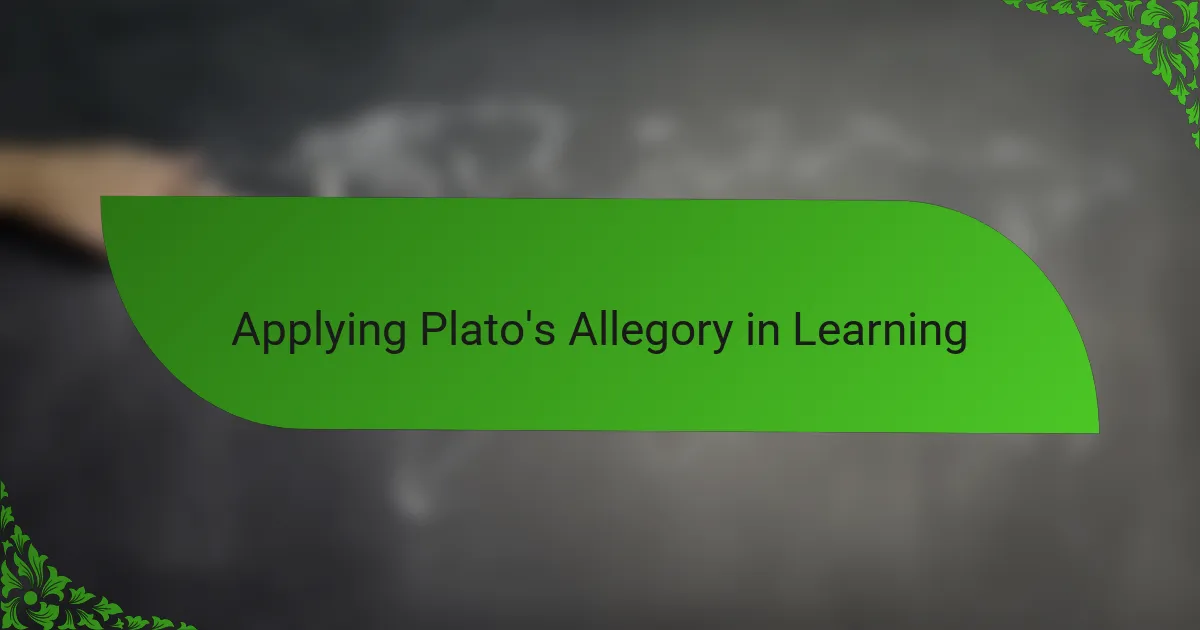
Applying Plato’s Allegory in Learning
Applying Plato’s Allegory in learning means recognizing the moments when what we know feels incomplete or even misleading. I recall times in my education when I thought I understood a concept, only to realize later that I had merely accepted someone else’s viewpoint without questioning it. Have you ever experienced that unsettling feeling of having to unlearn something before truly learning it?
This allegory pushed me to value the discomfort of exploring ideas that challenge my beliefs. It’s not easy to leave the shadows behind—sometimes it feels like stepping into a blinding light that forces you to rethink everything. Yet, those moments are where real growth happens, where learning becomes more about discovery than acceptance.
In practical terms, applying this means fostering curiosity and encouraging learners to question rather than just absorb. I’ve found that classrooms or discussions that invite doubt and debate often lead to deeper understanding. What if education embraced the cave’s light as a continuous journey instead of a final destination?
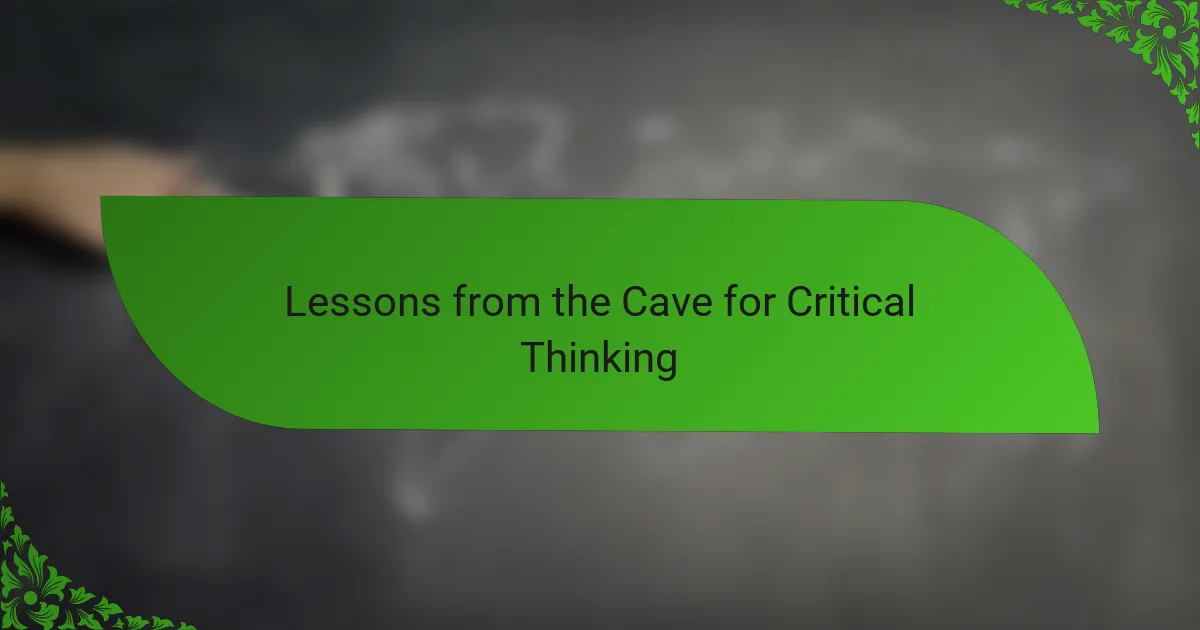
Lessons from the Cave for Critical Thinking
One of the key lessons from the cave that hit me hard about critical thinking is the need to constantly question what seems familiar. I remember catching myself accepting opinions or facts just because they were widely held, only to realize later how shallow my understanding was. Isn’t it curious how easy it is to mistake shadows on the wall for the full picture?
The allegory also taught me that critical thinking isn’t about quick judgments but about patience in facing uncomfortable truths. There were moments when I felt resistant, almost fearful, to challenge my assumptions because it meant stepping into unknown territory. Yet, those moments transformed into powerful breakthroughs, reminding me that discomfort often signals growth.
What I find most valuable is how the cave encourages us to seek evidence beyond appearances and to embrace complexity. Instead of settling for surface explanations, I learned to dig deeper, ask “why” relentlessly, and accept that some answers lead to more questions. Could embracing this mindset be the key to becoming truly wise rather than simply knowledgeable?
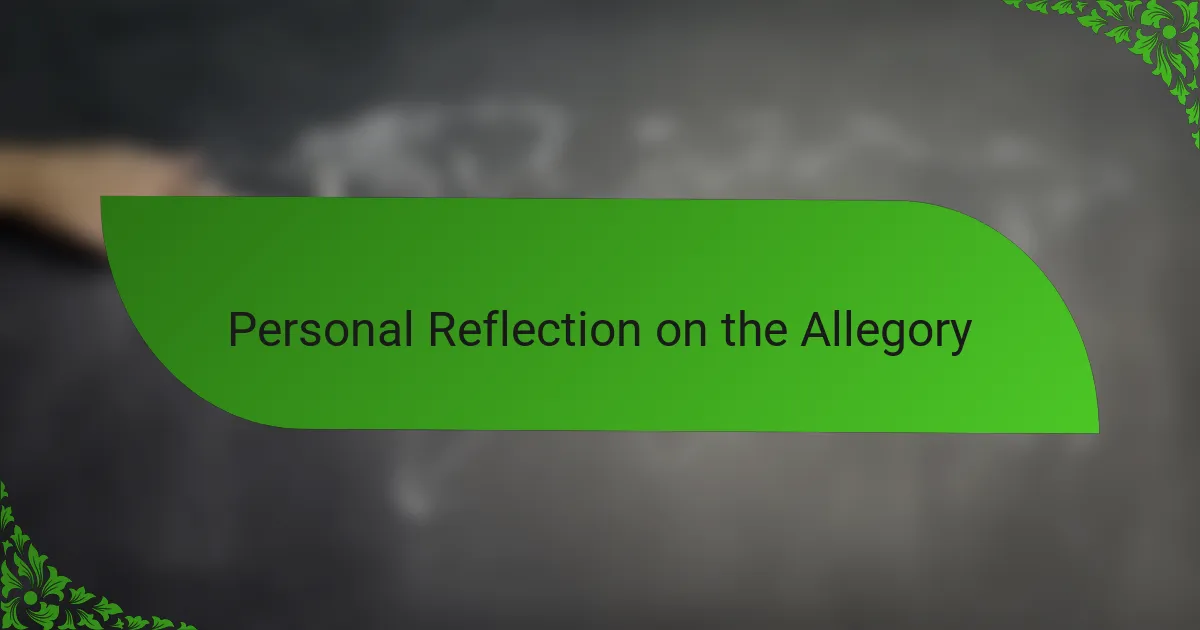
Personal Reflection on the Allegory
Reflecting on the Allegory of the Cave, I often think about my own moments of intellectual awakening—those times when I realized I’d been trapped by comfortable assumptions. It’s surprising how easy it is to live among shadows, feeling secure, until something disrupts that security and forces us to see differently. Have you felt that unsettling yet liberating moment when a familiar belief suddenly cracks open?
I remember the hesitation and fear that came with questioning long-held ideas, as if stepping out of the cave meant leaving part of myself behind. Yet, that discomfort was also a sign of progress—a necessary pain that accompanied growth. How many of us shy away from that discomfort because it’s easier to cling to what we know, even if it’s incomplete?
Ultimately, the allegory feels personal because it mirrors my journey toward clarity and self-awareness. It reminds me that learning is never a destination but a continuous escape from shadows toward light—and that light can be dazzling, confusing, and deeply rewarding all at once. Doesn’t that make you wonder what other caves you might still be inside?
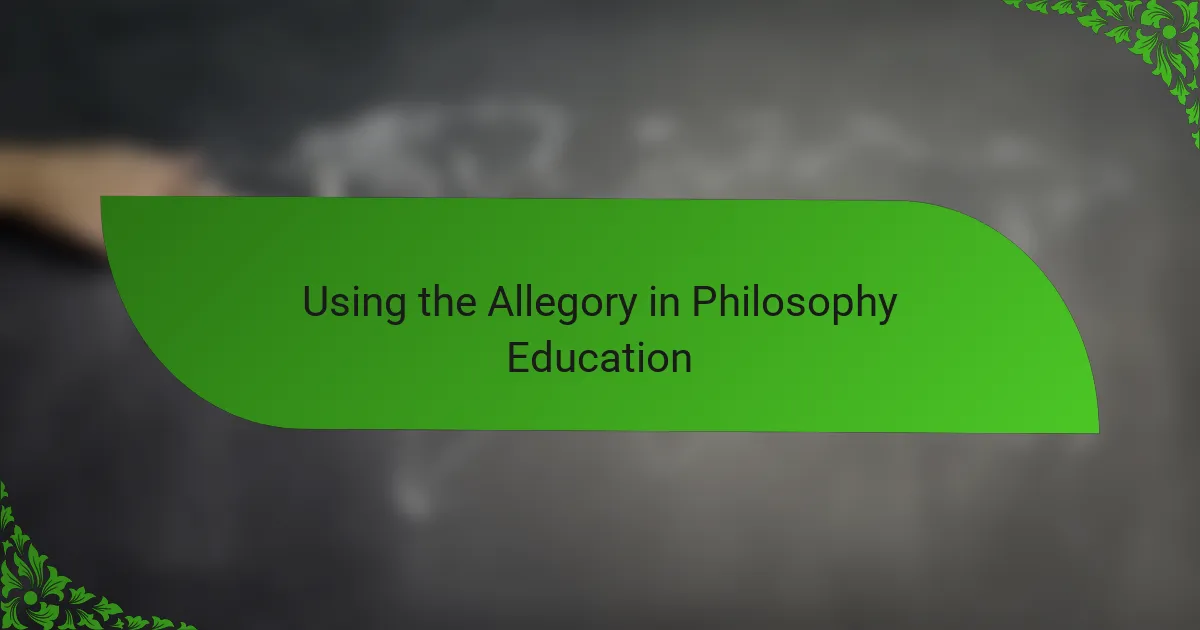
Using the Allegory in Philosophy Education
Using Plato’s Allegory in philosophy education has always struck me as a powerful way to inspire students to question their reality. I remember teaching a class where introducing the cave sparked a lively discussion—students began sharing their own “shadows,” the preconceptions they had never challenged before. Isn’t it amazing how a simple story can open the door to deep self-reflection?
What I find particularly effective is using the allegory to highlight the emotional aspects of learning—the fear of leaving behind familiar ideas and the excitement of discovering new perspectives. I’ve seen firsthand how acknowledging this emotional journey helps learners stay motivated, rather than feeling overwhelmed by abstract concepts. Could embracing this vulnerability make philosophy more accessible and meaningful?
In practice, the allegory encourages creating a classroom atmosphere where curiosity thrives and doubts are welcomed as vital steps toward wisdom. I often ask students to imagine themselves as the freed prisoner and reflect on what light they might be avoiding. This approach turns abstract philosophy into a personal exploration, making the learning experience both challenging and deeply rewarding.
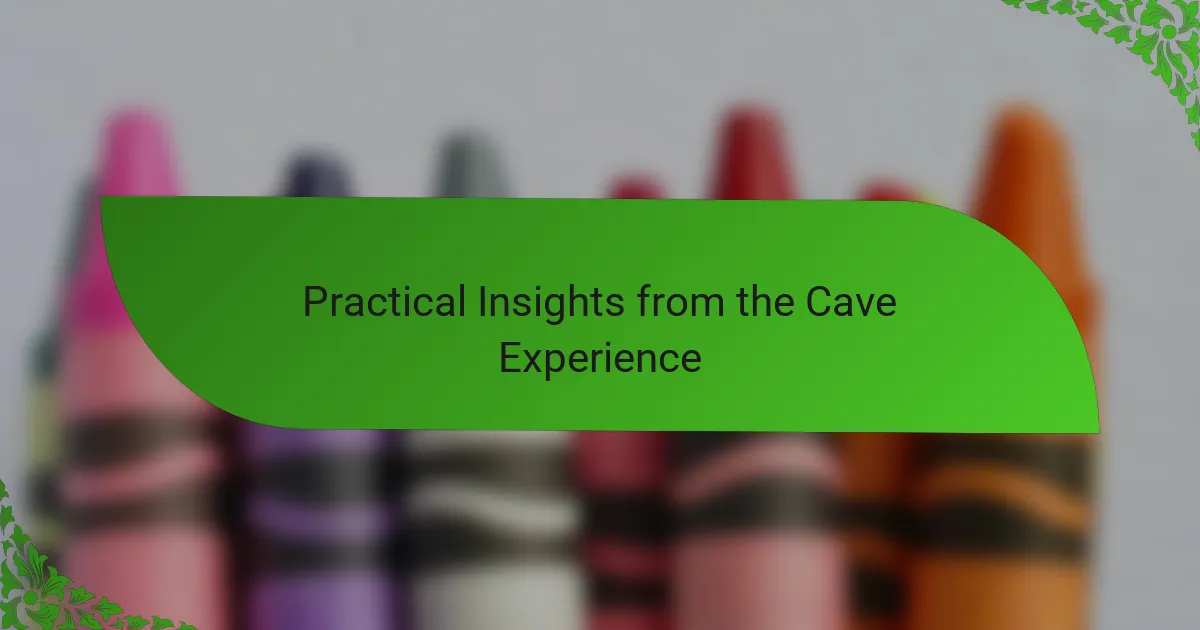
Practical Insights from the Cave Experience
I’ve found that the cave experience teaches us how easily we can mistake limited perspectives for the whole truth. When I first recognized this, it was like realizing I had been living on a tiny island of assumptions, unaware of the vast ocean beyond. Have you ever caught yourself stubbornly defending a belief, only to discover it was just a shadow cast by incomplete understanding?
This experience also revealed how stepping out of comfort zones is essential but not painless. I recall feeling a mix of excitement and anxiety as I challenged my own views—like walking blindfolded into bright sunlight, unsure whether to squint or look away. Isn’t it curious how growth often rides on that tension between fear and curiosity?
Practically, the allegory reminded me to build patience with myself and others during the journey toward insight. Change rarely happens instantly; it’s more like peeling layers, each revealing deeper questions. What might happen if we approached learning as a gradual escape from shadows, welcoming each new glimpse of light with open minds rather than resistance?
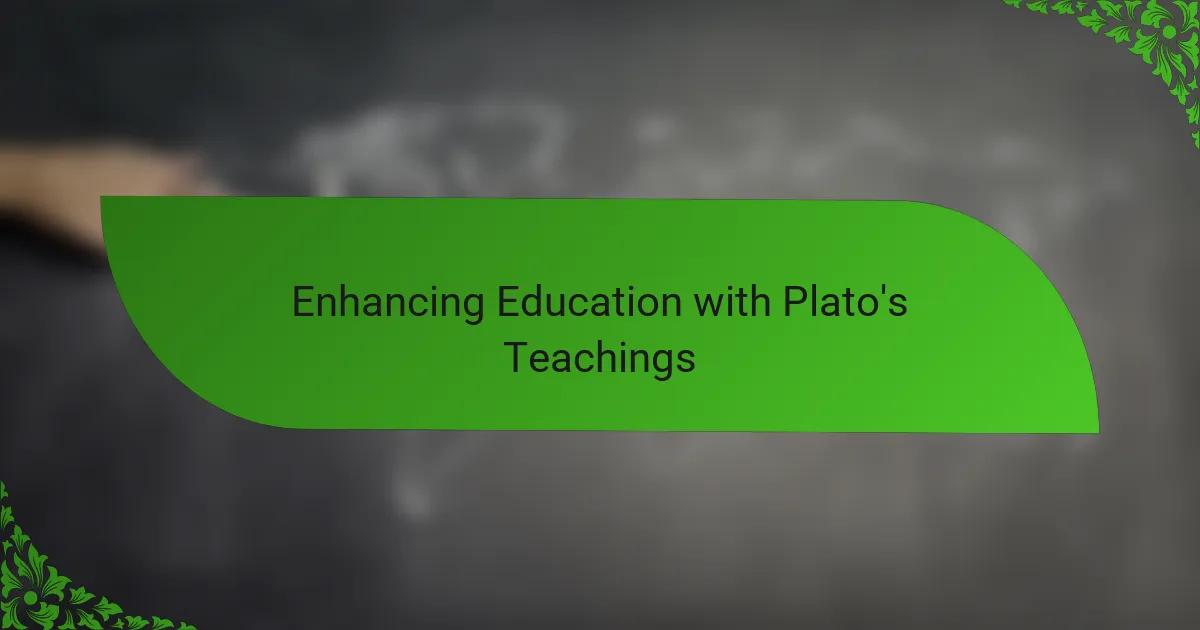
Enhancing Education with Plato’s Teachings
I’ve come to appreciate how Plato’s teachings can transform education from mere information delivery into a profound journey of enlightenment. When I integrate his ideas into teaching, I see students beginning to question not just the material but their own assumptions—sparked by that same urge to leave the cave behind. Isn’t it remarkable how the allegory invites learners to become active explorers rather than passive recipients of knowledge?
From my experience, embracing Plato’s vision means creating spaces where confusion and doubt are not feared but welcomed as essential steps toward understanding. I remember moments when students hesitated to challenge their beliefs, only to find that wrestling with uncertainty deepened their insight and engagement. Could it be that the discomfort of questioning is actually the fuel that drives meaningful education?
Ultimately, applying Plato’s insights feels like nurturing a continuous awakening—the kind that encourages curiosity to thrive beyond the classroom walls. It’s about lighting a spark that pushes learners to seek clarity in shadows and see beyond appearances, a lesson I hold close whenever I think about how true education should feel. What if this approach reshaped how we all learn and grow?